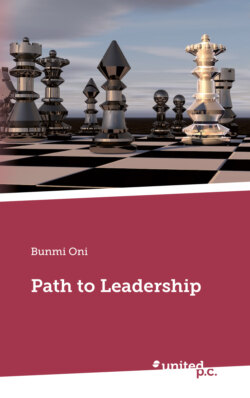Читать книгу Path to Leadership - Bunmi Oni - Страница 9
Оглавление3
Why Me?
American football is not much played outside North America and a few other countries, but the passion it evokes among the fans is no less strong than soccer generates in countries where this is the national sport. The fanfare and verve in the stand during a match is eclectic and the energy level does not diminish through the game — well, except for a discouraged losing side. I first came into relatively close contact with American football during a course at the University of Michigan in 1990, and became a fan of the U of M team in college football. Having grown up with soccer as a national sport, it was hard to think that this high contact game could be so consuming. The first reality that a newcomer to football cannot miss, once you get to understand it, is the extent to which it is really about strategy and execution. The communication between the coach and the quarterback allows a precise and up-to-date revision of the strategy if the original play did not appear effective, or if the game plan of the opposition was impacting the agreed play. One of the most potent tools of a football coach, and quite unlike soccer, is the facility to call a time-out — quite apart from the short break between quarters — when he needs to redirect the play or implement a whole new plan. Usually the team returns to the field after a time-out with a completely different blueprint from the one they left the field with. The opposing team understands too that they would need to read the new game plan on the other side and respond accordingly. The coach calling a time-out wants to ensure the new game cannot be easily deciphered in order to assure the objective of advancing the ball into the opposing territory for an eventual touch down and to widen the score line. The facility of a time-out is not limitless in a football game, as only three discretionary time-outs are allowed in each half, and coaches call time-out only when strictly necessary, completely at his discretion. It’s not a democratic process where team members vote, nor is there room for an opinion poll. The clock stops when a time-out is called, and this is only part of the reasons that a match that should normally be sixty minutes divided into four quarters of fifteen minutes each, sometimes goes on for three or four hours. The clock stops whenever play is interrupted, either by an incomplete pass or when play goes out-of-bounds. Beside the time-out allowed for teams, the officials can call time-outs to administer a penalty, attend to an injured player, or for the commissioners to review and decide on a particular move on their high-resolution, closed- circuit monitors. Time-outs allow specialisation in a way that no other sport does. Only eleven players are allowed on the field at one time, but those eleven can change frequently, depending on the coach’s strategy, the challenges a team faces, or the conditions of play. Officials call for media time-outs after a change of possession. This can be for turnover by interception, fumble or on downs, following a successful point(s) after touchdown (referred to in football as PAT) or a field goal try, or, in the National Football League, after a kickoff when the opposing team scored, usually when there is more than five minutes to play in each quarter. If an instant replay challenge is called during the game, the referees also signal for a media time-out. The referee signals these media time-outs by first using the time-out signal, then extending both arms in a horizontal position.
